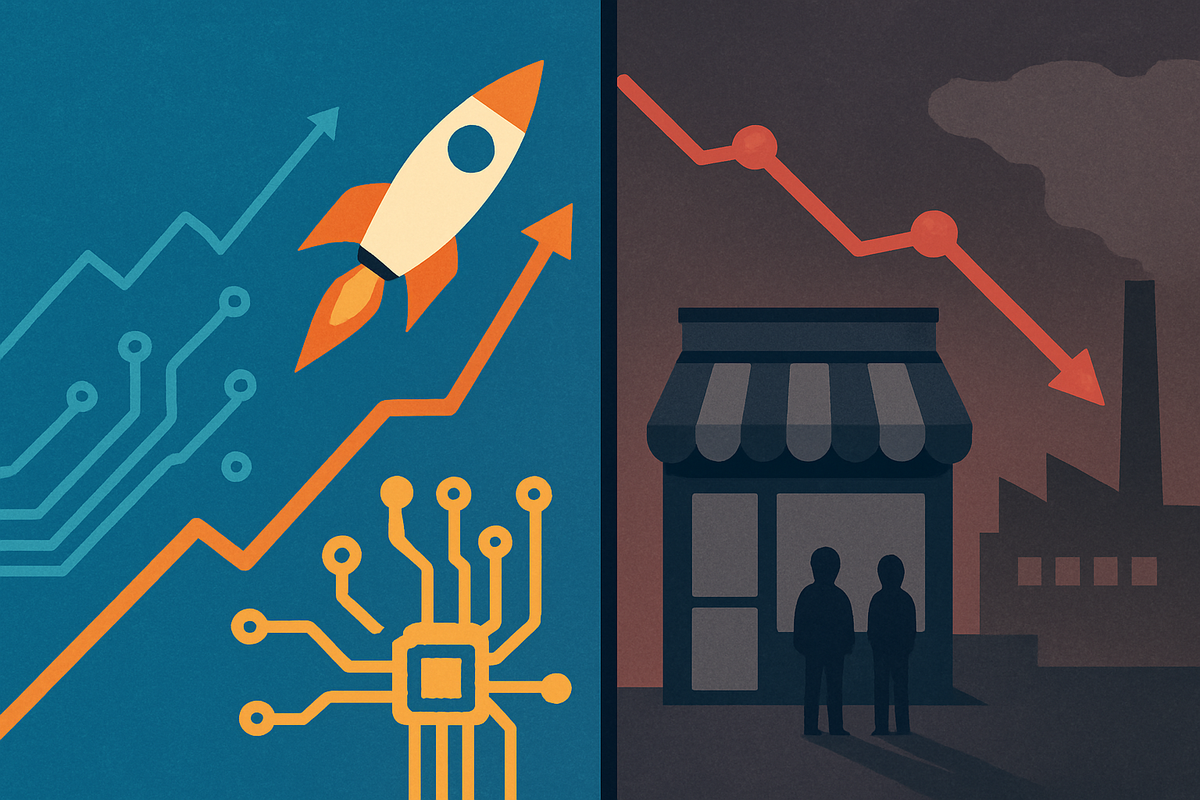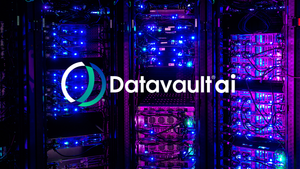
October 10, 2025 – The financial markets are currently experiencing a pronounced divergence, with a select group of companies reaching new 52-week highs, propelled by technological innovation and strategic market positioning, while established consumer and industrial players slide to 52-week lows, grappling with shifting economic landscapes and sector-specific headwinds. This bifurcated performance paints a picture of a market in flux, where resilience and adaptability to emerging trends are paramount, contrasting sharply with the struggles faced by those impacted by evolving consumer behavior and macroeconomic pressures.
This period, leading up to Q4 2025, reflects a market undergoing significant re-evaluation. While global indices like the S&P 500 and Nasdaq Composite have shown robust performance, driven by receding economic anxieties and strong corporate earnings in certain sectors, the underlying currents reveal a more complex reality. Investors are actively rotating capital, favoring sectors poised for growth amidst technological advancements like AI, while withdrawing from areas facing inflationary pressures, elevated interest rates, and dampened consumer spending.
A Tale of Two Markets: Driving Forces Behind Extremes
The recent wave of 52-week highs is largely concentrated in sectors benefiting from cutting-edge technology, strategic partnerships, and robust demand for specialized services. Companies like Rocket Lab USA (NASDAQ: RKLB) have seen their shares surge due to successful launches, significant deals with entities like the European Space Agency, and strategic positioning in national security space programs. Similarly, Monolithic Power Systems (NASDAQ: MPWR) has been a standout, reporting record revenues and gaining substantial market share in the high-growth AI chip sector, particularly with Nvidia's Blackwell Ultra. Cloud security firm Zscaler Inc. (NASDAQ: ZS) also hit new peaks, fueled by strong demand for its Zero Trust Exchange platform, exceeding earnings expectations, and receiving numerous analyst upgrades.
Other notable high-flyers include Globalstar Inc. (NASDAQ: GSAT), which benefited from increased revenue, government contracts, and infrastructure expansion for its mobile satellite system. MP Materials (NYSE: MP) soared on the back of a landmark public-private partnership with the U.S. Department of Defense to bolster the domestic rare earth magnet supply chain, reducing reliance on foreign sources. The burgeoning AI sector has also lifted Iren Ltd. (NASDAQ: IREN), which strategically pivoted from Bitcoin mining to AI cloud services, and Navitas Semiconductor (NASDAQ: NVTS), driven by a significant partnership with NVIDIA for AI data center technology. In the energy and utility space, Microvast Holdings, Inc. (NASDAQ: MVST) impressed with a financial turnaround and advancements in solid-state battery technology, while Chesapeake Utilities Corp. (NYSE: CPK) demonstrated consistent performance and dividend reliability. Financial services provider SEI Investments Company (NASDAQ: SEIC) also reached new highs, buoyed by positive economic sentiment, anticipated tax cuts, and a diversified product portfolio.
Conversely, a substantial number of companies have found themselves on the wrong side of market sentiment, hitting 52-week lows due to a confluence of macroeconomic headwinds and company-specific challenges. Retail giant Target (NYSE: TGT) and appliance manufacturer Whirlpool (NYSE: WHR) face pressures from decreased consumer spending, exacerbated by rising inflation and interest rates. Under Armour (NYSE: UAA) has struggled with missed earnings and revenue expectations, leading to analyst downgrades and a significant stock decline. Shipping and logistics firm Matson Inc. (NYSE: MATX) has seen its stock dip despite strong earnings, indicative of broader market challenges impacting investor confidence in the transportation sector.
The advertising technology space also saw significant declines, with Criteo S.A. (NASDAQ: CRTO) hitting new lows after a major client curtailed spending and the company issued revised, lower fiscal year guidance. In the healthcare and industrial sectors, Alcon AG (NYSE: ALC) suffered from a soft quarter and reduced guidance due to a slowdown in the eye-care market, while DaVita HealthCare Partners Inc. (NYSE: DVA) faced operational challenges and concerns over future guidance. Workforce management software provider Paylocity Holding Corporation (NASDAQ: PCTY) and cloud contact center specialist Five9 Inc. (NASDAQ: FIVN) have been impacted by broader market trends, concerns about AI's disruptive potential, and slowing revenue growth. Lastly, automotive parts distributor LKQ Corporation (NASDAQ: LKQ) plummeted after missing earnings expectations and cutting its full-year guidance, citing macroeconomic headwinds and a lack of recovery in North American repairable claims.
The Shifting Sands: Who Wins and Who Loses
The current market environment clearly delineates "winners" and "losers," primarily based on their exposure to growth drivers versus economic sensitivities. Companies like Monolithic Power Systems (NASDAQ: MPWR), Zscaler Inc. (ZS), and Navitas Semiconductor (NASDAQ: NVTS) are direct beneficiaries of the relentless march of technological advancement, particularly the AI revolution. Their strong earnings, strategic partnerships, and innovative product offerings position them as clear winners, attracting significant investor capital looking for high-growth opportunities. Similarly, Rocket Lab USA (NASDAQ: RKLB) and MP Materials (NYSE: MP) exemplify strategic wins, capitalizing on niche markets, government contracts, and national security priorities, showcasing how geopolitical and defense spending trends can create significant market opportunities. These companies are demonstrating robust financial health, often exceeding analyst expectations and projecting strong future growth, making them attractive in a market hungry for performance.
On the losing side, companies like Target (NYSE: TGT), Whirlpool (NYSE: WHR), and Under Armour (NYSE: UAA) are feeling the brunt of a cautious consumer. Elevated inflation and persistent high interest rates are eroding discretionary spending, directly impacting retail and consumer discretionary sectors. These companies often face challenges in inventory management, pricing power, and adapting to rapidly changing consumer preferences, leading to weaker sales and missed financial targets. The struggles of Criteo S.A. (NASDAQ: CRTO) and Five9 Inc. (NASDAQ: FIVN) highlight vulnerabilities within the tech sector itself, particularly for companies reliant on client spending or facing disruption from new technologies like AI in their core business models. Furthermore, supply chain disruptions and increased operational costs, as cited by LKQ Corporation (NASDAQ: LKQ), continue to plague industrial and automotive sectors, squeezing profit margins and dampening investor enthusiasm. The common thread among these companies is a struggle to maintain profitability and growth amidst a backdrop of economic uncertainty and fierce competition.
Wider Significance: A Market in Transition
This stark divergence in stock performance is more than just individual company news; it signals broader industry trends and a significant market transition. The surge in tech and specialized industrial stocks underscores the accelerating impact of the artificial intelligence revolution, digital transformation, and renewed focus on supply chain resilience and national security. Companies at the forefront of AI, advanced manufacturing, and space technology are not just growing; they are reshaping economic landscapes, creating new demand, and attracting talent and capital. This trend suggests a deepening technological divide, where innovation leaders will continue to command premium valuations.
Conversely, the struggles of consumer-facing businesses and certain traditional tech players highlight the lingering effects of macroeconomic pressures, including persistent inflation and higher interest rates. These factors are compelling consumers to be more judicious with their spending, impacting sectors reliant on discretionary income. This situation could trigger ripple effects, forcing competitors to re-evaluate their strategies, focus on cost efficiencies, and potentially consolidate. Regulatory implications are also emerging, particularly in strategic sectors like rare earths (MP Materials), where government partnerships are becoming crucial for national economic and security interests. Historically, such periods of market bifurcation often precede broader economic rebalancing, where capital flows aggressively towards emerging growth areas, leaving slower-growth or structurally challenged sectors to undergo significant restructuring or consolidation. This parallels historical cycles where new technologies (e.g., the internet boom) created distinct winners and losers, fundamentally altering market leadership.
What Comes Next: Navigating the New Normal
Looking ahead, the market is poised for continued volatility and strategic reorientation. In the short term, companies at 52-week highs are likely to sustain their momentum, driven by ongoing demand for their innovative solutions and strong financial performance. However, they will need to manage high expectations and continue delivering on growth promises. For companies at 52-week lows, the immediate future may involve further pressure, as economic headwinds persist. Many will be forced to undertake strategic pivots, such as cost-cutting measures, divestitures, or aggressive innovation to regain market share and investor confidence. For instance, companies like Under Armour (NYSE: UAA) might need to re-evaluate their brand positioning and product offerings, while retailers like Target (NYSE: TGT) could double down on efficiency and personalized customer experiences.
In the long term, the market opportunities will likely favor agility and innovation. Companies that can successfully integrate AI into their operations, enhance supply chain resilience, and adapt to evolving consumer behaviors will be best positioned for sustained growth. This might lead to further consolidation in struggling sectors, as stronger players acquire weaker ones to gain market share or technology. Conversely, new market entrants leveraging disruptive technologies could emerge, challenging existing paradigms. Potential scenarios include a continued "K-shaped" recovery, where tech and innovation-driven sectors thrive while traditional industries face prolonged stagnation, or a gradual rebalancing if inflation cools and consumer confidence returns. Investors should anticipate a dynamic environment requiring careful due diligence and a nuanced understanding of sector-specific drivers.
Comprehensive Wrap-Up: A Call for Strategic Adaptation
In summary, the recent divergence in stock performance, marked by numerous 52-week highs and lows, underscores a pivotal moment in the financial markets. The key takeaway is the accelerating influence of technological innovation, particularly AI, and strategic national interests in driving market leadership. Companies that have embraced these trends, demonstrated robust earnings, and secured strategic partnerships are reaping significant rewards. Conversely, those grappling with shifts in consumer spending, macroeconomic pressures, and industry-specific challenges are experiencing substantial setbacks.
Moving forward, the market will continue to be shaped by these powerful forces. Investors should meticulously assess company fundamentals, paying close attention to adaptability, innovation pipelines, and resilience against economic headwinds. The lasting impact of this period will likely be a recalibration of market valuations, favoring companies with strong competitive advantages in high-growth areas and those demonstrating exceptional operational efficiency. What investors should watch for in the coming months are further earnings reports, guidance revisions, merger and acquisition activities in struggling sectors, and any shifts in central bank policies that could alter the economic landscape. The ability to navigate this complex, bifurcated market will be crucial for success.
This content is intended for informational purposes only and is not financial advice


















